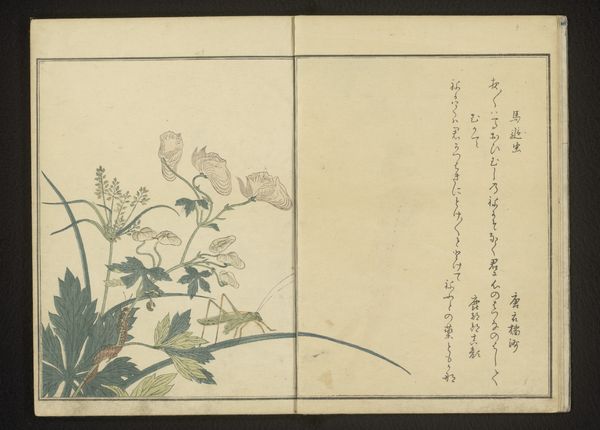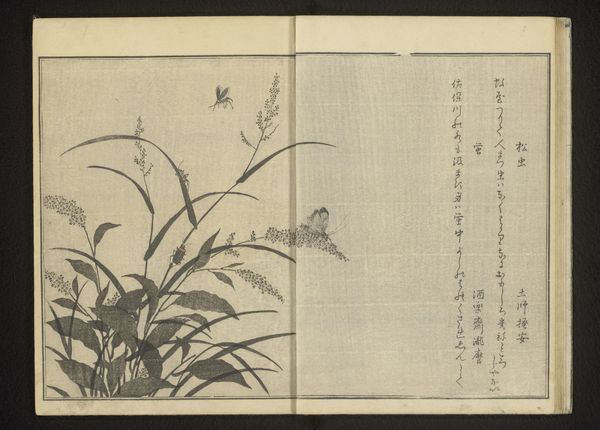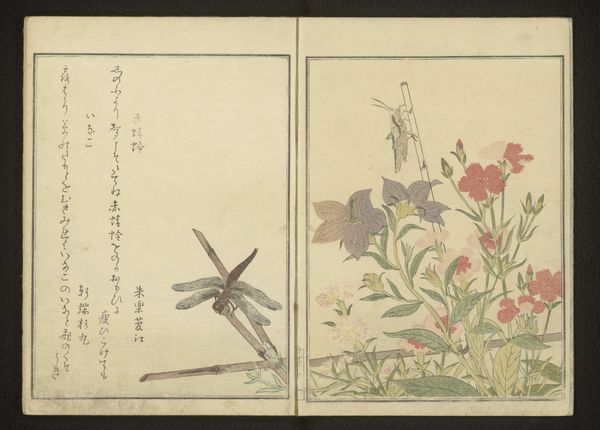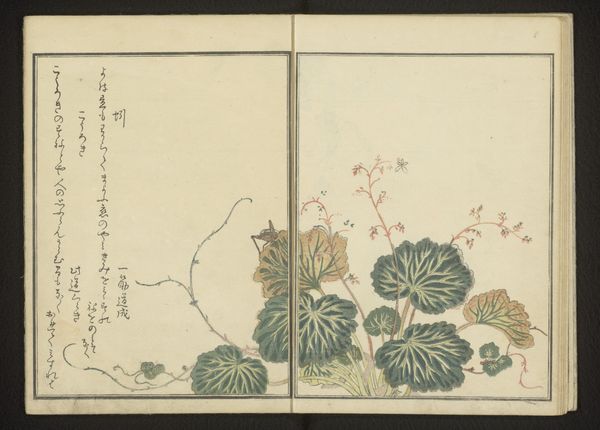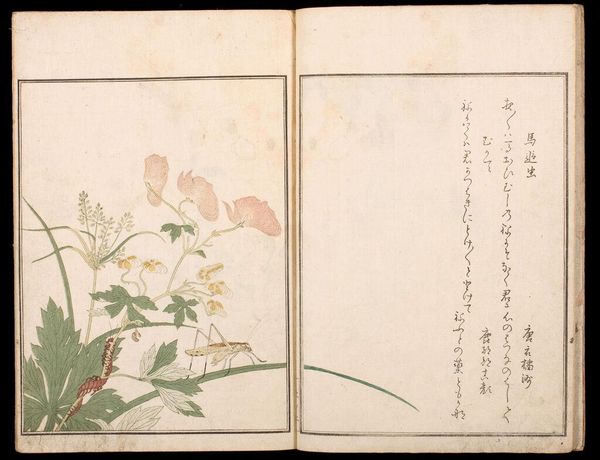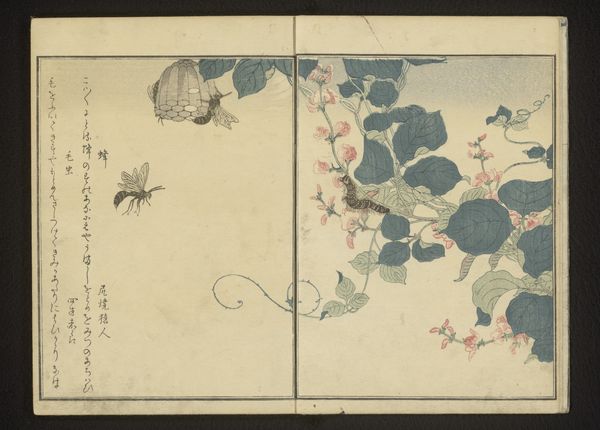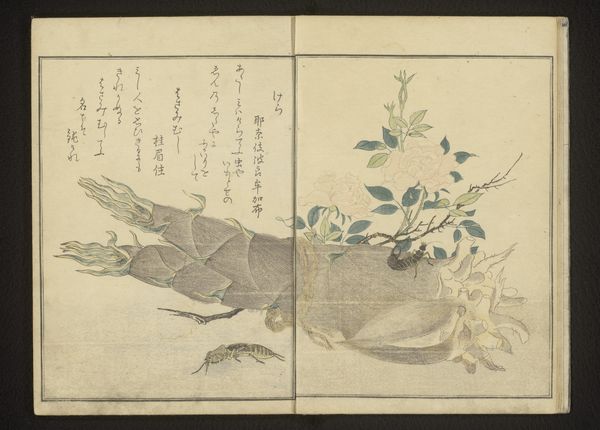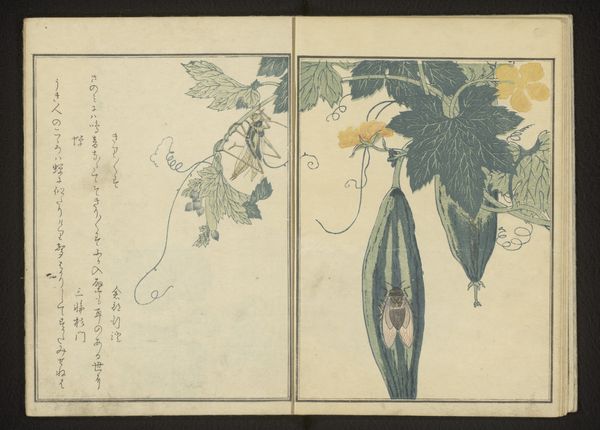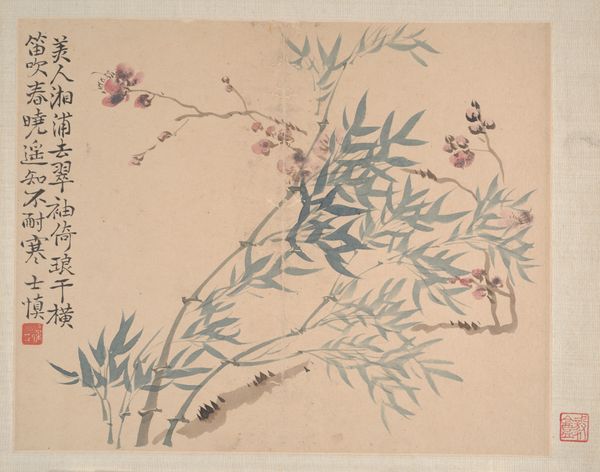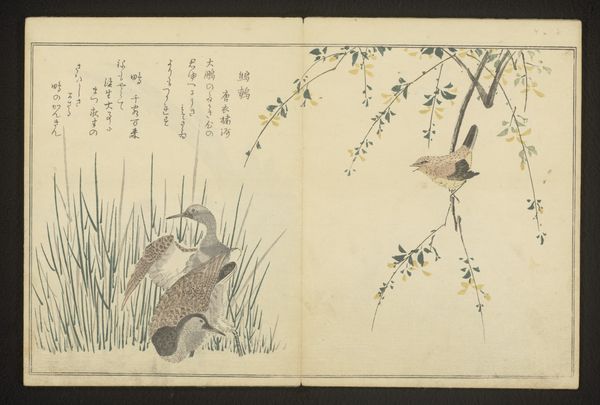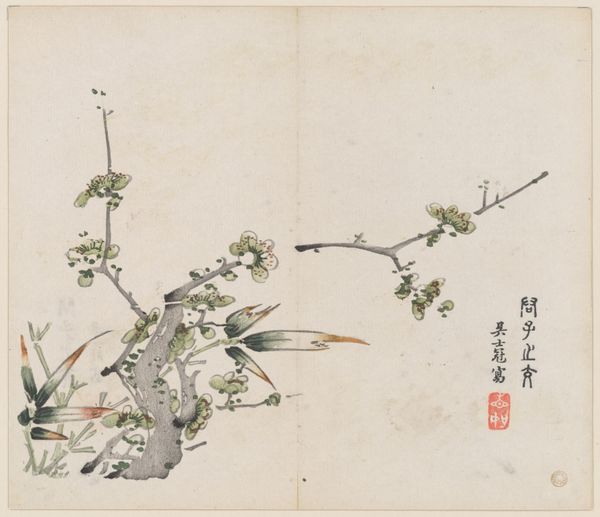
Basketworm and helmetbeetle on bush clover and stone-leek flower 1788
0:00
0:00
kitagawautamaro
Rijksmuseum
#
aged paper
#
ink paper printed
#
sketch book
#
personal sketchbook
#
pen-ink sketch
#
pen and pencil
#
pen work
#
sketchbook drawing
#
sketchbook art
#
coloring book page
Dimensions: height 250 mm, width 180 mm
Copyright: Rijks Museum: Open Domain
This diptych by Kitagawa Utamaro, made in Japan in the late 18th century, uses woodblock printing to depict insects amidst flowering plants. The natural world held a particular cultural significance during the Edo period. While ostensibly a study of flora and fauna, works like this one reveal the influence of Japan’s neo-Confucianism on the art world. Emphasis was placed on empirical observation and classification, influenced by engagement with European scientific methodology. And, yet, Japan’s intellectual institutions remained deeply suspicious of western ideas. The practice of ukiyo-e printmaking, however, relied on collaboration between artists, woodworkers, and publishers. It became a conduit through which the social and political norms of the period could be challenged. To understand the nuances of this print, scholars draw on diverse resources such as historical documents, scientific treatises, and collections of poetry. This interdisciplinary approach is essential for revealing the complex social dynamics embedded within seemingly simple representations of the natural world.
Comments
No comments
Be the first to comment and join the conversation on the ultimate creative platform.
